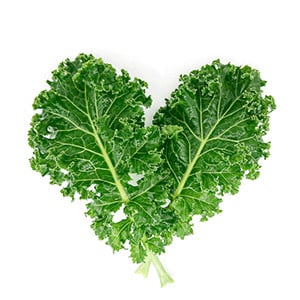Gemüsekohl - Grünkohl / Braunkohl

Gemüsekohl - Grünkohl / Braunkohl
Brassica oleracea var. sabellica
Pflanzenfamilie
Kreuzblütler (Brassicaceae)
Auch bekannt als
Braunkohl, Krauskohl, Federkohl, Winterkohl, Strunkkohl, Hochkohl, Lippische Palme, Oldenburger Palme
Anbaupause Fruchtwechsel
3 Jahre
Saisonübersicht
Voranzucht
Pflanzung
Ernte
J
F
M
A
M
J
J
A
S
O
N
D
Details
Lichtbedarf
Sonnig
Wasserbedarf
Sehr feucht
Boden
Mittelschwer (lehmig)
Nährstoffbedarf
Hoch
Pflanzabstand
40 cm
Reihenabstand
60 cm
Saattiefe
2 cm
Anleitungen
Die Saison für diese Pflanze hat noch nicht begonnen. Die folgenden Anleitungen sind für die beginnende Saison.
Anfang April
Propagating
Mitte April
Transplanting
Anfang Mai
Harden
Beschreibung
Grünkohl gehört zur Familie der Kreuzblütler (Brassicaceae). Es handelt sich um eine Zuchtform des Gemüsekohls (Brassica oleracea). Der Grünkohl ist ein typisches Wintergemüse und ist auch unter den Namen Braunkohl oder Krauskohl bekannt, in der Schweiz auch unter dem Namen Federkohl. Diese Namen verdankt er seinen gefiederten und gekräuselten Blättern. Diese schnellwüchsige Blattkohlart hat je nach Sorte grüne bis rote Blätter. Und bildet, wie alle Kohlarten (außer Blumenkohl und Brokkoli) erst im zweiten Jahr Blüten. Die Frosthärte des Grünkohls ist hervorragend. Allgemein gilt, dass die Pflanzen -10°C problemlos aushalten. Eine Schneeauflage ist der ideale Frostschutz. Damit können auch noch kältere Perioden gut überstanden werden. Dies macht Grünkohl zu einem idealen Gemüse, das über den Winter stehen und beerntet werden kann. Die Kälte macht einige Sorten sogar milder im Geschmack. Es gibt aber auch Sorten, die von sich aus sehr mild sind, schon früher gesät werden können und als Baby-Leaf verwendet werden können.
Herkunft:
Grünkohl stammt ursprünglich aus dem östlichen Mittelmeerraum.
Anbautipps
Die Jungpflanzen können ab Mai im Frühbeet vorgezogen werden, ab Juni kannst auch direkt ins Beet säen. Du solltest auf eine ausreichende Saattiefe (2 cm) achten, um den Befall durch die Kohlfliege zu vermindern. Außerdem fördert das Anhäufeln der jungen Pflanzen das Wurzelwachstum und kann verhindern, dass die Kohlfliege in den Stängeln des Grünkohls ihre Eier ablegt. Wie bei allen Kohlarten solltest du auf der gleichen Fläche, auf der Kohlarten angebaut wurden, mehrere Jahre auch keinen Grünkohl anbauen, um Krankheiten wie die Kohlhernie oder Nematodenbefall vorzubeugen. Falls deine Böden sehr sauer sind, empfiehlt sich eine Kalkung. Kohlhernie kann bei pH-Werten zwischen 6,5 und 7,5 vorgebeugt werden. Lässt man den Grünkohl länger auf dem Beet stehen und setzt ihn gegen Anfang des Winters länger kalten Temperaturen aus, dann wird er milder, zarter und besser bekömmlich.
Gute Nachbarn
Artischocke
Aubergine
Bohne (Ackerbohne)
Bohne (Buschbohne)
Bohne (Stangenbohne)
Borretsch
Dill
Dost, Oregano, Majoran
Erbse
Gurke
Kamille
Kartoffel
Koriander
Kümmel
Mangold
Minze
Möhren
Pastinake
Petersilie
Physalis
Postelein (Winterportulak)
Radieschen
Rettich
Rhabarber
Ringelblume
Rüben / Bete
Salat (Endivien / Frisée)
Salat (Feldsalat)
Salat (Gartensalat)
Salat (Radicchio)
Salbei
Sellerie (Knollensellerie)
Sellerie (Stangensellerie)
Sojabohne
Spinat (Sommer)
Schlechte Nachbarn
Erdbeere
Fenchel
Gemüsefenchel
Gemüsekohl - Blumenkohl / Romanesco
Gemüsekohl - Brokkoli
Gemüsekohl - Kohlrabi
Gemüsekohl - Palmkohl / Schwarzkohl
Gemüsekohl - Rosenkohl
Gemüsekohl - Weißkohl / Weißer Spitzkohl
Gemüsekohl - Wirsing / Butterkohl
Knoblauch
Liebstöckel
Meerrettich
Okra
Rosmarinminze
Rübsen - Chinakohl
Rübsen - Komatsuna
Rübsen - Pak Choi
Rübsen - Speiserübe
Rucola
Steckrübe
Topinambur
Zwiebel
Zwiebel (Frühlingszwiebel)
Krankheiten
Kohlhernie
Echter Mehltau
Schädlinge
Kohlweißling
Kohlfliege
Nematoden
Weiße Fliege
Wurzelgallenälchen